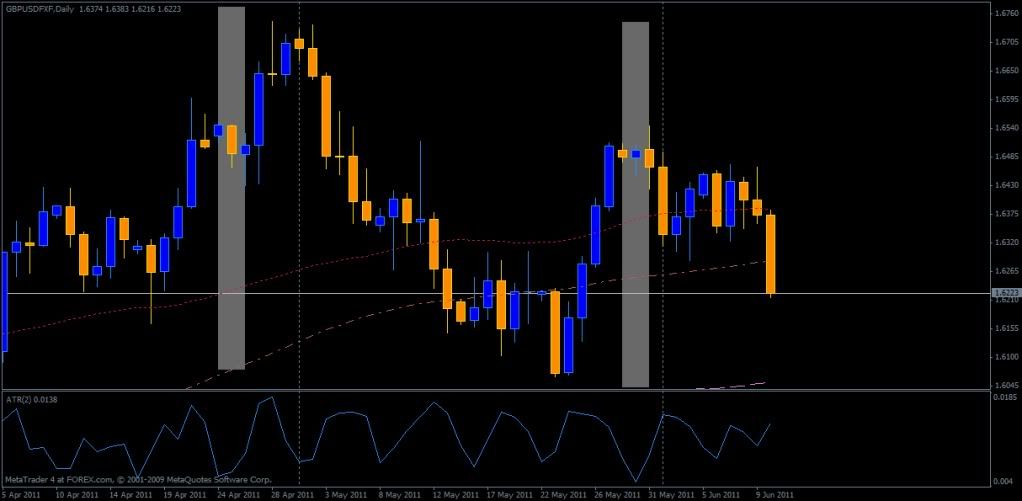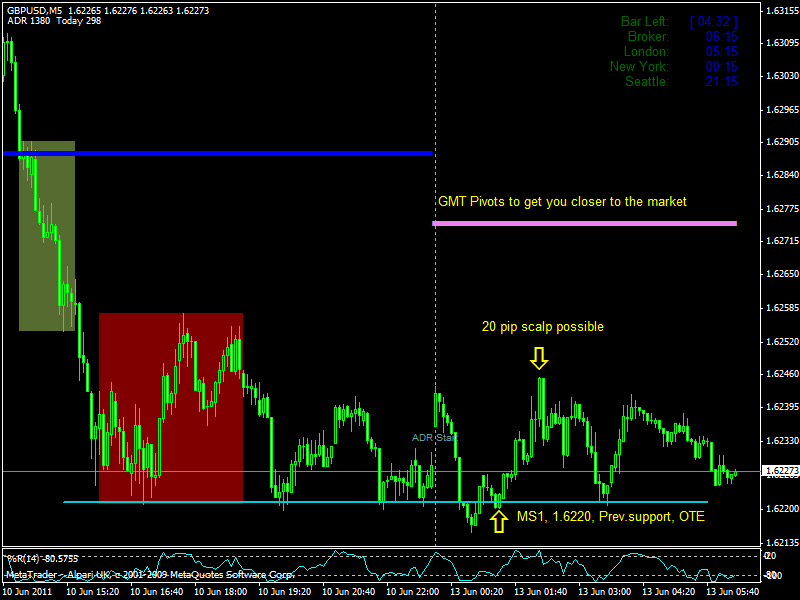This thread — and specifically NeedyPips’ post — have prompted me to rethink my ATR indicator. In particular, I’m rethinking my use of the Daily ATR(200) as a “regression line”.
On the GU, which is the pair I trade, Daily ATR’s have been trending lower for several years — which means that the Daily ATR(200) reads high (due to the severe lag in a 200-period indicator).
So, I wondered whether a simple hand-drawn regression line would work better than the Daily ATR(200), in conjunction with the Daily ATR(2).
For this comparison, I’ve enlarged my ATR indicator window, and set the range to approximately 4 months.
Here’s the ATR(200)/ATR(2) combination that I’ve used in the past:
And here is the ATR(2) with a hand-drawn regression line in place of the ATR(200):
And, finally, both the hand-drawn regression line and the ATR(200) shown together:
I think I’m going to go with the regresson line for a while. Maybe it will offer better clues regarding increasing/decreasing daily price ranges.
Some comments on daily range and daily true range:
Daily range is simply H-L for one particular day. Each day is independent of the preceding day, and of the following day. For markets which close overnight, and re-open the next day, daily range ignores any gap in price which may occur between one day’s close and the next day’s open.
The idea of true range is to account for the overnight gaps in markets which close overnight, and the arithmetic for doing this accounting is standard and universally accepted.
In the forex market, the distinction between range and true range is essentially meaningless, because the forex market closes only at the weekend. When there are no gaps in price to account for, range = true range.
Therefore, when some posters on this thread talk about daily range (or average daily range), and — simply out of habit — I talk about true range (or average true range), we’re all talking about the same thing.
Obviously, the terms average daily range, or average daily true range, cannot really apply to one day’s range, because there is no averaging involved. But, we all know what is meant when someone refers to ADR(1) or ATR(1). When two or more days’ ranges are averaged, then the number of days being averaged is typically shown in parentheses.
Most range indicators built into forex trading platforms refer to average true range (ATR), and most will not allow you to select 1 as the number of periods to be “averaged”.










